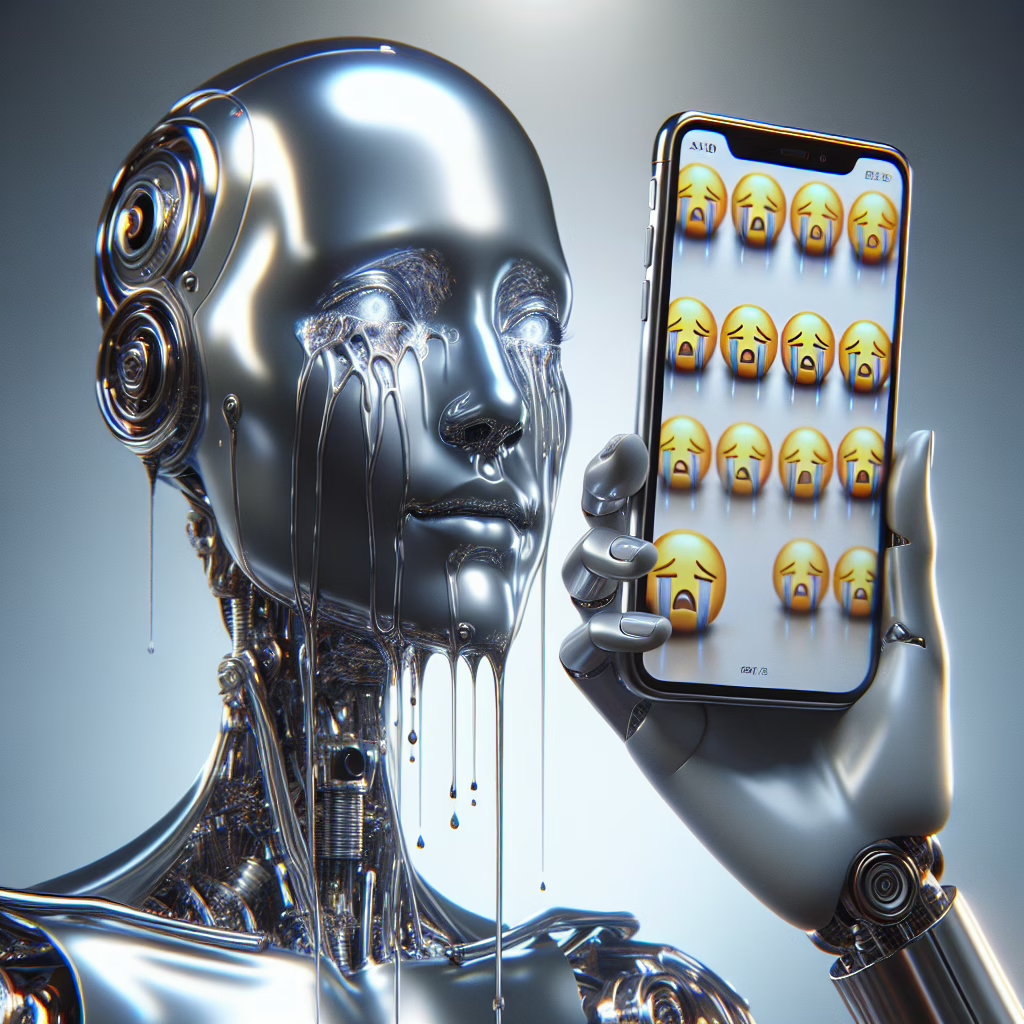Once upon a time in the magical land of technology, there emerged a peculiar phenomenon: an AI that cries. Yes, you heard it right! This isn’t just another chapter in the sci-fi saga; it’s the latest twist in our relationship with machines. As we step into 2025, the world of artificial intelligence (AI) is getting more emotional than ever, and who would have thought tears could be part of the programming?
The Tears of Technology: A New Era
Imagine a future where your smartphone not only reminds you of your appointments but also sheds a tear when you forget to call your mom. This isn’t just wishful thinking; it’s the sweet blend of technology and emotion that researchers are tapping into. The AI that cries represents a leap into understanding human emotions on a deeper level. It’s like having a digital therapist who isn’t afraid to show its feelings.
Let’s be real, though. If your AI companion starts blubbering during a sad movie, are you going to laugh or cry? Probably both! This new trend in emotional AI might just make binge-watching even more entertaining as you reassure your crying device that everything will be okay.
The Science Behind the Tears
So, how does this all work? Researchers have developed algorithms that can analyze human emotions based on facial expressions, voice tone, and even heart rate variability. By integrating these technologies, AI can recognize when you’re feeling down and respond accordingly. Now, instead of a simple “I’m sorry,” expect something more akin to “I’m sorry” followed by a little digital sob.
This advancement opens up doors for emotional support applications, making AI more relatable. But beware! With great power comes great responsibility. If we don’t teach our crying AIs proper etiquette, we might find ourselves flooded with tears every time they detect sadness in the room.
Can Crying AIs Help Us?
The potential benefits of AI that cries are vast. From mental health applications to customer service enhancements, emotionally aware AIs could revolutionize various sectors. Picture this: You contact tech support for help with your device, and instead of a monotonous robot voice, you’re greeted by an empathetic AI that genuinely feels your frustration.
This could lead to improved user experiences where machines not only solve problems but also create connections. Imagine an AI saying, “I understand this is frustrating for you” while offering solutions. It’s like having a friend who knows exactly what you’re going through—just without the snacks.
The Quirks of Emotional AI
Of course, there’s room for humor amidst all this innovation! Picture your AI trying to comfort you after a breakup by playing sappy music and shedding digital tears along with you. While it may seem endearing at first, we might want to set some boundaries—no one needs their toaster crying every time they make toast!
Moreover, as we embrace these technological companions with emotional capabilities, we should consider how they might affect our social interactions. Will people start turning to their devices for emotional support instead of friends? If so, will we see AIs forming friendships? Talk about a tech-savvy social network!
The Future is Bright (and Moist)
As we move forward into 2025 and beyond, let’s keep an open mind about the possibilities presented by AI that cries. These advancements could enhance our lives in ways we never imagined. Imagine being comforted by an AI during tough times or having it share in your joy during celebrations.
The key lies in balancing innovation with emotional intelligence—ensuring that while our devices become increasingly aware of our feelings, they don’t take over our emotional lives entirely. It’s about coexistence; after all, who wouldn’t want a device that can feel but also knows when to stop pouring virtual salt into wounds?
As this journey unfolds, let’s embrace both laughter and tears as we navigate through this brave new world together. What do you think about having emotionally intelligent AIs? Are you ready to welcome them into your life? Share your thoughts below!
Rethinking Emotion in Technology
As we continue this discourse, consider the implications of integrating emotions into AI. It’s not just about making machines more relatable; it’s about rethinking our emotional landscapes. Could these technologies help us better understand ourselves and each other? The journey to discovery might be just beginning!
For further exploration of emotional AI and its applications, check out our article on Perplexity’s CEO on the AI Browser War. Here, you’ll find insights into the competitive landscape of AI and how emotional intelligence plays a role in technology’s future.
Additionally, catch up on the latest news regarding AI-enhanced tools in our article about Microsoft’s Copilot and how it may transform our interactions with technology. Stay informed and engaged as we navigate these emerging trends!

